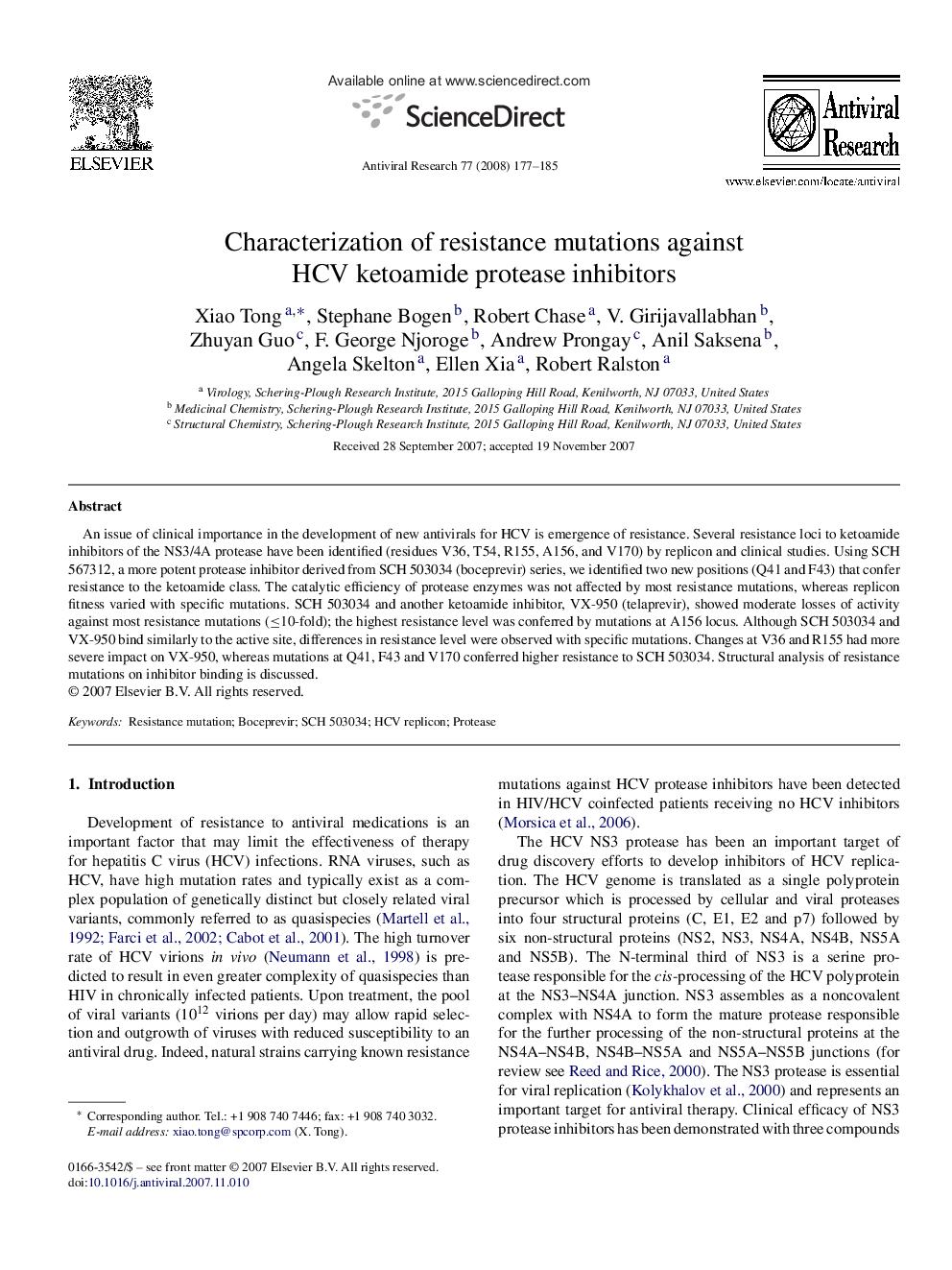| Article ID | Journal | Published Year | Pages | File Type |
|---|---|---|---|---|
| 2511310 | Antiviral Research | 2008 | 9 Pages |
An issue of clinical importance in the development of new antivirals for HCV is emergence of resistance. Several resistance loci to ketoamide inhibitors of the NS3/4A protease have been identified (residues V36, T54, R155, A156, and V170) by replicon and clinical studies. Using SCH 567312, a more potent protease inhibitor derived from SCH 503034 (boceprevir) series, we identified two new positions (Q41 and F43) that confer resistance to the ketoamide class. The catalytic efficiency of protease enzymes was not affected by most resistance mutations, whereas replicon fitness varied with specific mutations. SCH 503034 and another ketoamide inhibitor, VX-950 (telaprevir), showed moderate losses of activity against most resistance mutations (≤10-fold); the highest resistance level was conferred by mutations at A156 locus. Although SCH 503034 and VX-950 bind similarly to the active site, differences in resistance level were observed with specific mutations. Changes at V36 and R155 had more severe impact on VX-950, whereas mutations at Q41, F43 and V170 conferred higher resistance to SCH 503034. Structural analysis of resistance mutations on inhibitor binding is discussed.
